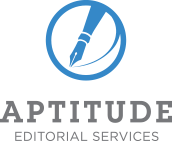For some time I had been looking for a business writing textbook that’s useful for both novices and experts. At the 2018 Editors Canada conference in Saskatoon, I was delighted to meet Margaret Chandler, a writer, editor, and teacher of business writing; her book Good Writing Is Good Business (Green Fuse, 2017) has become my go-to resource for my own business-oriented writing and the one that I can confidently recommend to clients and others who want to learn to write more effectively on the job.
Chandler not only clearly and simply shows how to write well, she puts business writing in context: you’re a human being sitting at a desk, facing deadlines, navigating office culture and protocol, juggling (sometimes conflicting) priorities and expectations.
The heart of the book is Chandler’s purpose, audience, context, and tone (PACT) evaluation tool, which provides the most thorough audience analysis technique I’ve ever seen; under context, she addresses important things that often slip by as unconscious assumptions.
There’s much more to writing than assembling words into sentences and paragraphs; Chandler masterfully teaches the skills to do this, and also delves into scheduling a writing project and working on a writing team. She shows not only how to craft an effective email, but how to decide when to write an email and when to pick up the phone. She covers the basics of editing, with a section on editing in the workplace, including advice on approaching the task with tact and sensitivity, and even on editing your boss’s work(!). She provides editing checklists and information on using published style manuals and developing an in-house style guide.
About one-third of the book is devoted to grammar, punctuation, and style in accessible plain language with plenty of examples. In a valuable appendix for writers whose first language isn’t English, Chandler notes, “The errors you are likely to make in English depend on your first language”; she then describes common English errors made by native speakers of each major language family.
In each chapter, Chandler provides stimulating and instructive exercises, and at the back of the book, an answer key.
In just one respect this already superb book could be improved. Chandler gives an overview of document design and using visuals such as figures and tables, but in both these areas the discussion could be more detailed. There’s some advice on when to represent information in visuals, but little on how to create them. Basic lessons on making a table, a bar or line chart, and a flow diagram, for example, would help readers immensely.
In sum, Good Writing Is Good Business is an excellent resource for mastering business writing skills and creating effective documents.


